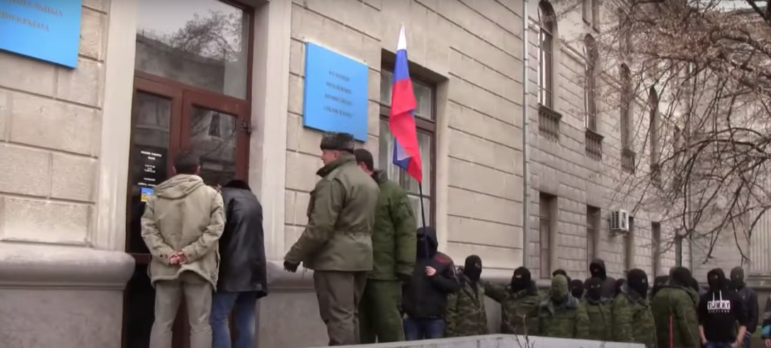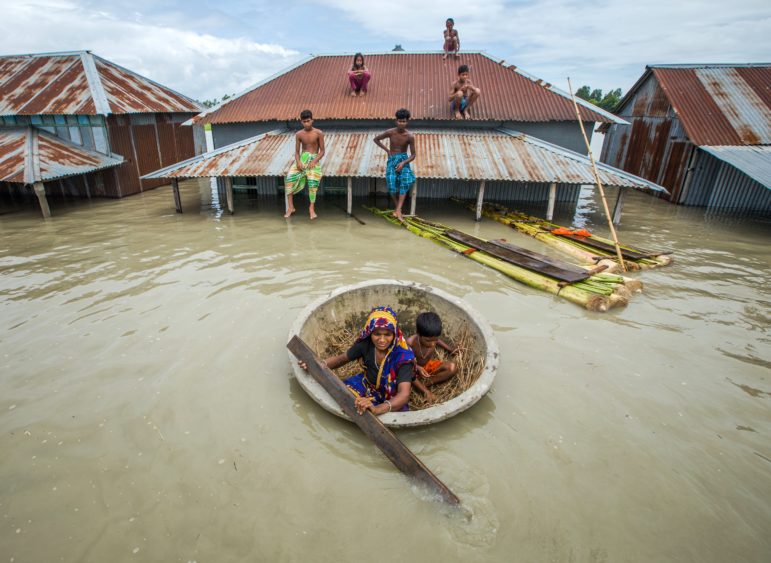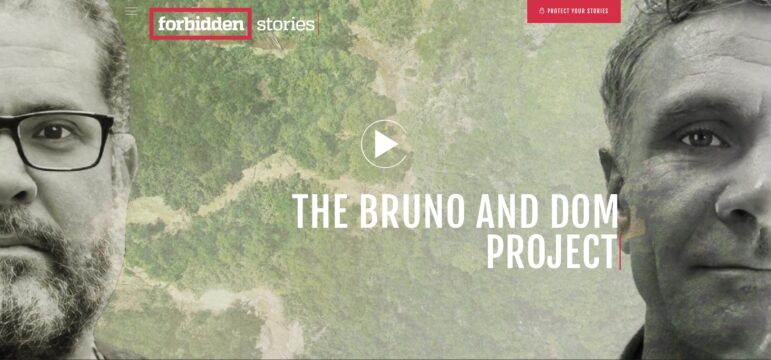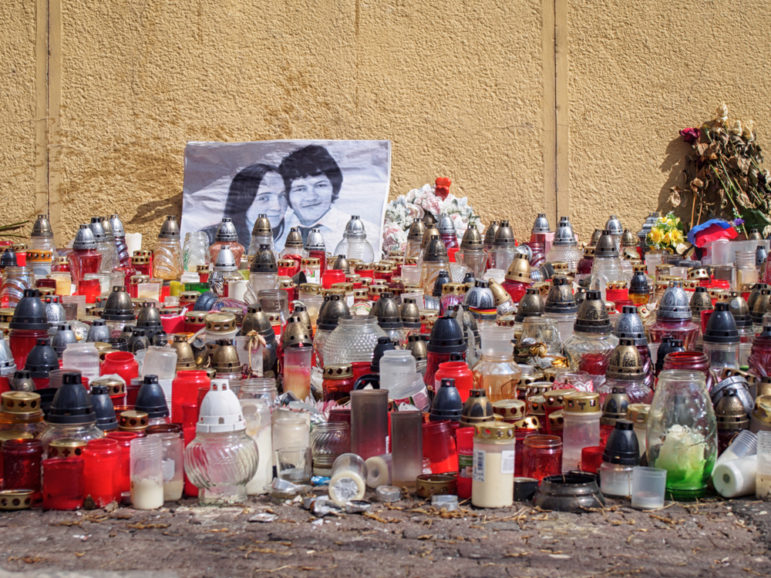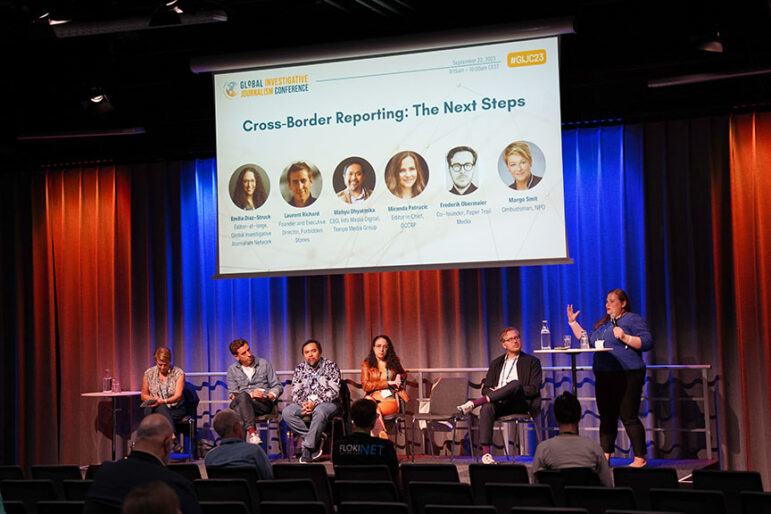

Illustration: Mélody Da Fonseca for Forbidden Stories
How a Group of Paris-Based Journalists Are Saving Investigations from Oblivion
Read this article in
Indian journalist Shashikant Warishe knew that his reporting on a controversial new refinery in the western Konkan region was angering some dangerous people.
He had been warned by friends and threatened by enemies. But he kept it up, writing for his local newspaper about the rampant land speculation and the environmental risks linked to the mega-project, as well as the resistance put up by many of those living in the area.
In February 2023, while he was fueling his motorcycle at a gas station, he was mowed down by an SUV, dying of his injuries shortly after. Police believe he was deliberately murdered by a land dealer about whom Warishe had just penned a scathing piece. (The accused, who is still in custody awaiting trial, claims it was a “pure accident.”)
But Warishe’s investigations didn’t die the day that he was killed. Forbidden Stories, a Paris-based nonprofit, carried on his work in a joint effort with the Indian Express, producing an in-depth article on the issue in three languages earlier this year.
Founded in 2017, the raison d’être of Forbidden Stories, a GIJN member, is to pick up investigations that have been shelved because of threats or violence against the press, publishing them alongside the accounts of how the journalists originally conducting them were silenced.
The goal is to “send a strong signal that killing the journalist won’t kill the story,” said founder and executive director Laurent Richard, who has 25 years of experience in investigative reporting.
On this World Press Freedom Day, that mission is of even more relevance, as numerous bad actors around the world continue to imperil accountability journalism and the public’s right to know. The need is pressing: Journalists in many parts of the world are intimidated, jailed, or killed because of their work. In many cases, particularly in the Global South, this happens with few people ever knowing, leaving some investigations abandoned forever.
Forbidden Stories is trying to change that by exposing human rights violations, environmental abuses, corruption, and organized crime from Mexico to Azerbaijan, from Morocco to the Philippines.
The various leads the team receive from around the world are subjected to pre-investigations to gauge their relevance and feasibility, as well as to confirm that the abuse suffered by the reporters on the ground was linked to their work.
Then, for each assignment, the group joins forces with other news outlets, putting together and coordinating a task force that can include several dozen journalists. Over the years, Forbidden Stories has worked with 90 partners, including both small, local newsrooms familiar with the territory and large international organizations like Reuters and The New York Times.
Strong Focus on the Environment

Laurent Richard speaks at the International Journalism Festival in Perugia in April 2024. Image: Diego Figone for the IJF
Forbidden Stories hit the ground running by coordinating, as its first endeavor, 18 news organizations committed to continuing the work of Maltese journalist Daphne Caruana Galizia, who was murdered in 2017. It now has some 20 projects under its belt.
Environmental crimes feature as one of the most frequently recurring themes of the group’s work. The story about Shashikant Warishe and the new refinery in western India highlighted the pollution risks associated with the plant. Another wide-ranging investigation published in 2019, Green Blood, focused on the damage caused by the mining industry in Tanzania, Guatemala, and India. Meanwhile The Bruno and Dom Project, coordinated by Forbidden Stories after the reporter Dom Phillips and his collaborator Bruno Pereira were killed in Brazil, shed light on the plundering of the Amazon’s natural resources.
According to Richard, the environment is the focus of a large share of the aborted investigations Forbidden Stories comes across because probing the way corporations and politicians exploit natural resources in countries with high levels of corruption and impunity is extremely dangerous. According to one study by the Committee to Protect Journalists, at least 13 journalists, and possibly as many as 29, were killed between 2009 and 2019 while working in this field, making it one of the deadliest beats after war reporting.
But the group’s commitment to covering these stories is also the result of a deliberate editorial choice. “I believe we need to do more and more stories about environmental crimes,” said Richard. “It’s a time in which as citizens we need to make huge decisions about protecting the planet, but how can we make those decisions if we don’t have the necessary information?”
Another priority for Forbidden Stories is to show that the crimes in question are not as local and remote as they may seem, but are connected with the everyday lives of millions of people all over the world. The gold dug up in the Tanzanian mine investigated in 2019 was being used to manufacture products sold to Western consumers by leading tech companies. The cartels who kill journalists and corrupt officials in Mexico run multinational operations responsible for flooding Europe and the US with drugs.
Discouraging Attacks on Journalists
But Forbidden Stories is not only about honoring silenced journalists and continuing their work. It also aims to help reporters carry on themselves. That’s the purpose of the SafeBox Network, a secure online platform where journalists can make their material accessible to the Forbidden Stories team, should anyone try to silence them.
“The goal is to discourage the attacks against those who have joined, by making it known that they share their findings with Forbidden Stories and sending the message that the investigation will be published no matter what, so there is no point in attacking them,” explained Fanny Toubin, SafeBox’s project manager.
The platform was launched in 2022 and currently has some 110 users. Gauging how effective it is in deterring violence against its members is hard, but the feedback is encouraging, with many “feeling less isolated and more supported,” said Toubin.
Of course SafeBox is far from able to guarantee total safety, as shown by the murder of Rafael Moreno – a Colombian journalist gunned down by a hitman in October 2022, a few days after he had uploaded his material.
But, determined his death would not be in vain, Forbidden Stories tasked a team of 30 journalists to finish his work, who together produced a flurry of articles in the months following his death that shed light on corruption and environmental crimes in Moreno’s Córdoba province.
“The idea that you can put your information out there for somebody to finish the story is a very important deterrent for anybody contemplating killing or doing something to a journalist,” said Miranda Patrucic, editor-in-chief of the Organized Crime and Corruption Reporting project, at the IJF in Perugia last month.
Big Challenges and Big Plans
Dealing with extremely dangerous environments is not the only challenge Forbidden Stories has to face. For one, money is tight. Funding comes from philanthropic foundations and individual donations, with a yearly budget currently hovering at around three million euros (US$3.2 million). But the investigations are difficult, slow, and require a lot of resources, said Richard – including for legal fees, given how frequently those mentioned in the articles respond by suing the authors.
When it comes to SafeBox, another problem the group faces involves earning reporters’ trust. “Reassuring them so they feel comfortable sharing their information with us is a huge challenge,” acknowledged Toubin.
The platform uses SecureDrop, a highly-reliable system developed by the Freedom of the Press Foundation that has been tested for bugs and vulnerabilities. But journalists operating in countries with little press freedom live with the constant risk of online hacking and monitoring, which can make them wary of third-party tools such as SafeBox, said Carolyne Lunga, a researcher on collaborative investigative journalism in the Global South who teaches at City University London and at the University of Doha for Science and Technology.
The best way to convince wary reporters is to meet them face to face. Forbidden Stories has been organizing workshops — in places like Mexico, Indonesia, and Guatemala — to describe its mission, present SafeBox, and win local journalists’ trust. The platform got a big bump in its membership after each of those events, noted Toubin.
The Forbidden Stories team itself, despite the limited resources, has been expanding, more than doubling since last year to a total of 25 full-time staffers, and more hires are planned in the near future.
They have their work cut out for them. Richard wants Forbidden Stories to become better known and beef up the network of partners, especially where journalists are being targeted. Strengthening ties with local news outlets and making the organization and its mission better known in those areas is a way to disincentivize violence against reporters.
In line with its efforts to increase its reach, Forbidden Stories joined GIJN in 2020 and was among the partners of the 13th Global Investigative Journalism Conference organized by GIJN in Sweden last year.
More broadly, going forward Forbidden Stories aims to foster a collaborative journalism mentality around the world, said its founder, fighting what he called the “lone wolf reporter” approach. “The idea that you are alone with your own sources and your own stories […] we are trying to break that, knowing what we are facing: disinformation campaigns, harassment, cyber-surveillance, physical threats, global crime,” Richard said.
Joint investigations involving different newsrooms are becoming more frequent, Lunga noted, but “the mindset for collaboration, for some editors, is not there. Journalism continues to be very competitive,” she said.
For its part, the Forbidden Stories’ team is also hoping to inspire the creation of other similar organizations, and it’s willing to share its expertise with them. “We are not seeing Forbidden Stories as some kind of holding, but rather as a movement of people,” said Richard. “An open source model.”
 Michele Barbero is an Italian journalist based in Paris. After several years at France 24, he currently works for French news agency AFP. His byline has also appeared in a variety of publications, including Foreign Policy, Jacobin, and Wired UK.
Michele Barbero is an Italian journalist based in Paris. After several years at France 24, he currently works for French news agency AFP. His byline has also appeared in a variety of publications, including Foreign Policy, Jacobin, and Wired UK.


